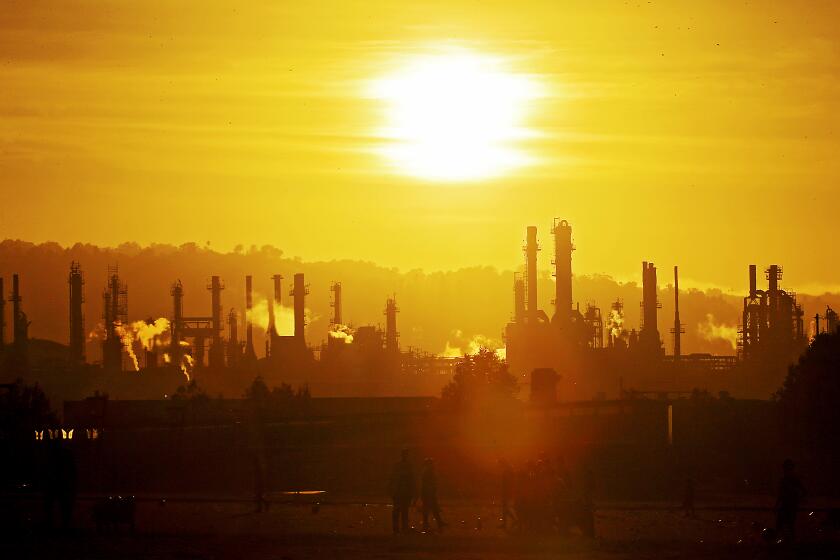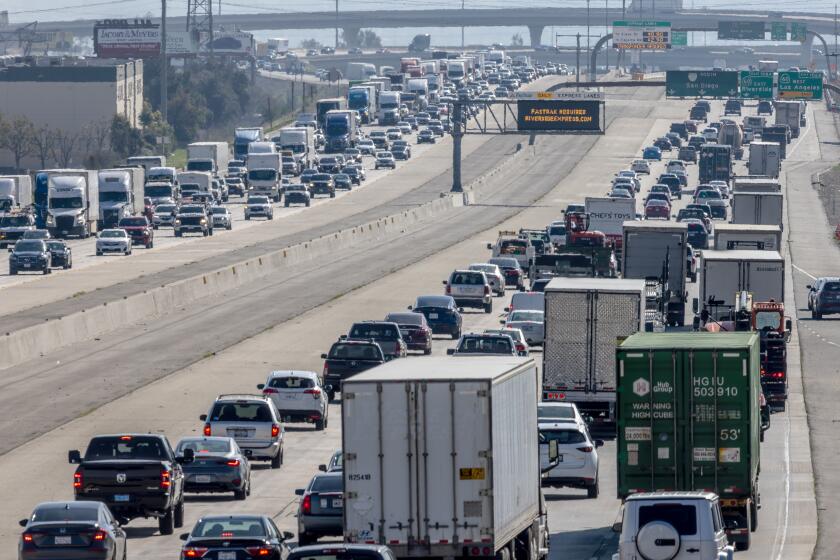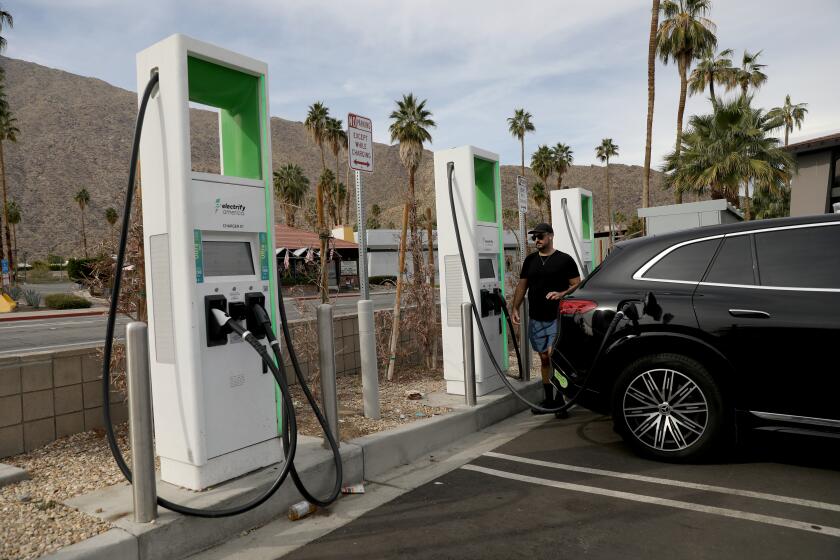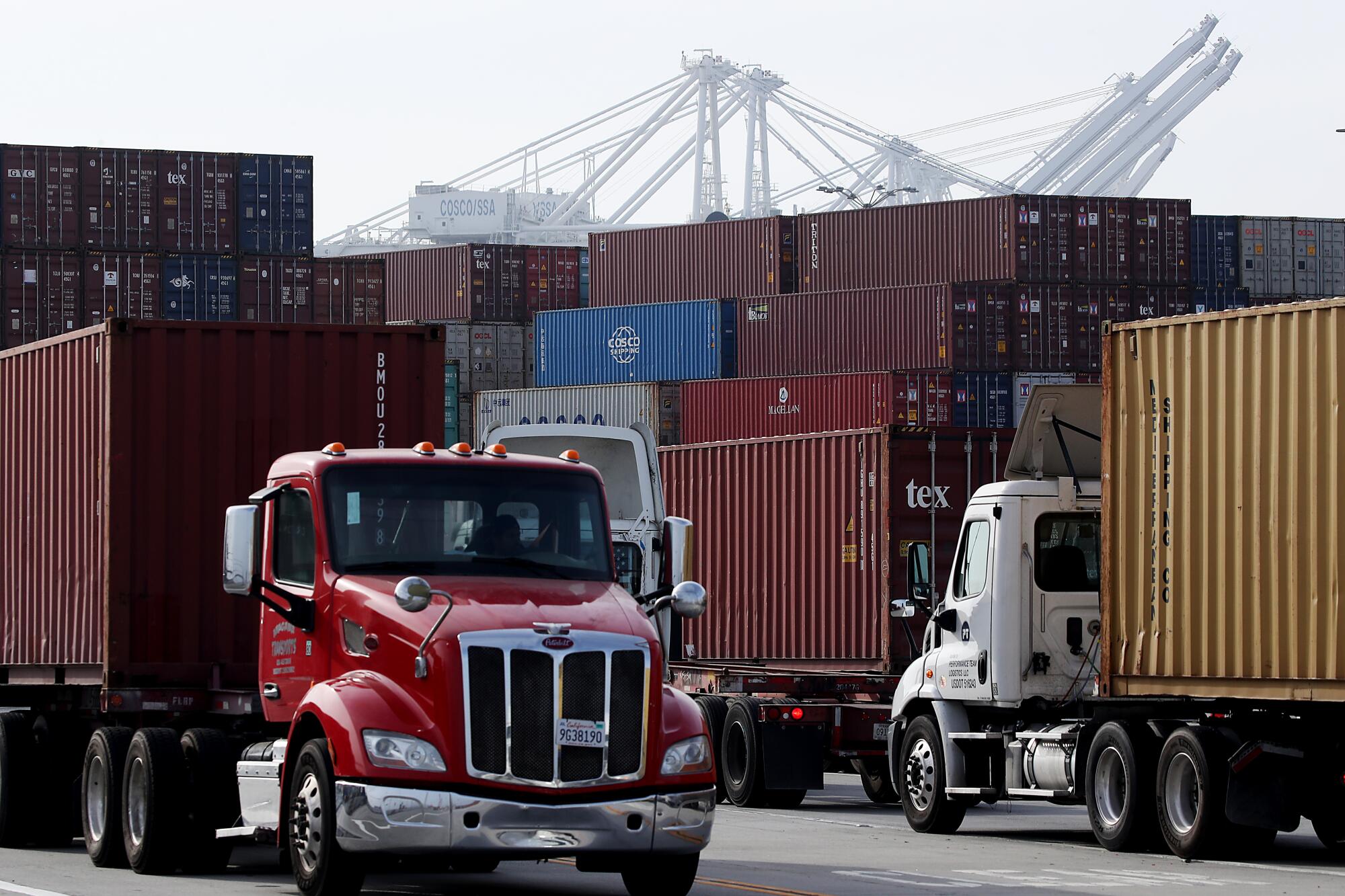
- Share via
More than 1,000 diesel-powered cargo trucks — which should’ve been banned from serving California ports — were granted access to the ports of Los Angeles and Long Beach due to inaction from the Biden administration, according to harbor records.
In April 2023, the California Air Resources Board voted to ban fossil fuel-powered big rigs from obtaining new registrations to serve the state’s 12 major seaports, a landmark rule that was slated to go into effect on Jan. 1.
But one year later, the U.S. Environmental Protection Agency has not granted a waiver for California’s so-called Advanced Clean Fleets rule. As a result, state air regulators have been unable to enforce the regulation, which has allowed trucking companies and independent operators to continue adding diesel-snorting big rigs that can pollute port communities for up to a decade.
Aggressive and impactful reporting on climate change, the environment, health and science.
Since the start of the year, more than 1,200 trucks have obtained new registrations to move cargo at the ports of Los Angeles and Long Beach, according to data obtained by the Los Angeles Times. About 92% of the newly registered trucks had diesel-powered engines, which are known to emit cancer-causing particles and planet-warming carbon emissions.
The Advanced Clean Fleets rule is one of eight clean-air policies that California regulators are still waiting for the Biden administration to sign off on. Collectively, these rules were expected to prevent 11,000 premature deaths and provide $116 billion in health benefits over the next three decades, according to the American Lung Assn.
But that assumed the rules would be implemented on time.
Regulators rescind controversial accounting rule that South Coast Air Quality Management District used to shield polluters from paying millions in fees.
Seven of the eight pending policies should’ve already gone into effect. The federal inaction has resulted in delays in adopting zero-emission technologies or reducing emissions for trucks, boats, trains, construction machinery and lawn equipment. And the deferred policy implementation could have national implications, as several other states have expressed interest in adopting California’s more stringent rules rather than the EPA’s.
Heading into an unpredictable election year when the presidency and both chambers of Congress are up for grabs, environmental advocates want to see these rules prioritized.
“Any further delay in the waiver process really does risk that we’re going to see more diesel trucks on the roads or working at the ports,” said Will Barrett, national senior director of clean air policy with the American Lung Assn. “We’re also going to see more gasoline-powered equipment like leaf blowers and lawnmowers when those sales should have been stopped. The transition to zero-emission technology in these sectors is delayed, and because of that, we’re concerned that we’re just going to see this equipment live on, putting out more pollution for longer than it should have.”
The EPA declined to comment on the addition of more diesel trucks at Southern California ports and the pending Advanced Clean Fleets waiver.
Environmental experts say the Biden administration has been tied up with its own jam-packed federal environmental agenda, which may have slowed the review process for California’s rules. In the past year, the EPA has approved new rules for cars, heavy-duty trucks, new coal- and gas-fired power plants and methane-leaking oil wells.
Those federal rules are expected to have little bearing in California, where state regulations are already more strict.
Due to its notoriously poor air quality, California holds the distinction as the only state that can regulate vehicle emissions, so long as it obtains permission from the EPA. The state has used these powers to adopt groundbreaking rules, such as requiring cars to be outfitted with catalytic converters and check engine lights.
“That’s the dance that’s been going on since the mid-1960s,” said Ann Carlson, a UCLA environmental law professor and former transportation czar with the Biden administration. “California leads, in part, because EPA grants its waiver. Then California pushes the rest of the country.”
Last week, Gov. Gavin Newsom and state rulemakers touted news that the sale of new zero-emission trucks had doubled in 2023 compared with the prior year, putting the state two years ahead of its goals. This mostly resulted from the sales of thousands of pickup trucks, such as Ford’s F-150 Lightning and Rivian’s R1 lineup.
Zero-emission big rigs remain a small fraction of sales and existing fleets serving state ports.
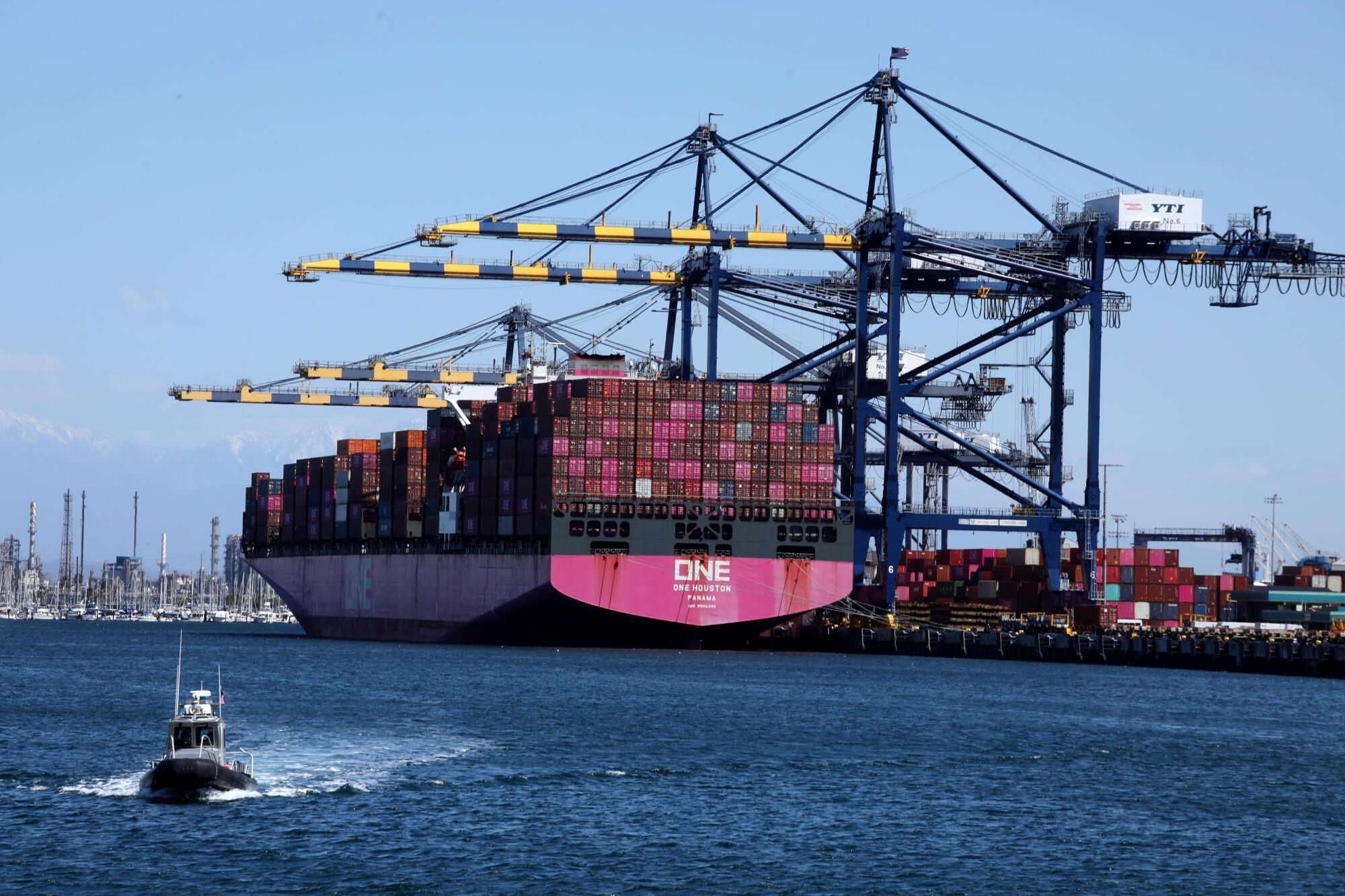
Asked about the outstanding Advanced Clean Fleets rule, state officials were optimistic the Biden administration would take action.
“We’re of course eagerly awaiting the U.S. EPA to grant our waiver, and we expect them to take action very soon,” said Steven Cliff, executive director of the California Air Resources Board.
“We’re seeing 1 in 6 new trucks sold is zero emissions,” Cliff added, “and going forward, that’s going to benefit Californians, especially those who live near ports who have been most impacted by pollution.”
Nearly 23,000 cargo trucks are registered with the Port of Los Angeles, the busiest container port in the Western Hemisphere. About 94% of those are diesel trucks, and another 5% burn natural gas. One percent are zero-emission: 271 cargo trucks are battery-electric, and nine are hydrogen fuel-cell.
The Port of Los Angeles announced last year that it had reduced diesel particulate matter by 88% since 2005, due, in part, to better controls for ships and cleaner truck engines.
L.A., Orange, Riverside and San Bernardino counties received a failing grade on air quality from the American Lung Assn. Again.
The Advanced Clean Fleets rule was expected to rapidly accelerate zero-emission adoption, starting with the 2024 ban on fossil-fuel truck registrations. In the year leading up to that deadline, trucking companies went on a buying spree, according to public records.
More than 9,000 trucks obtained new registrations at both ports in 2023 — almost triple the amount registered in 2018. The vast majority of these trucks had diesel-powered engines.
The registration of diesel trucks continued into the first half of 2024. More than 1,100 diesel trucks were registered at the ports so far this year. Seventy-six electric trucks and 19 hydrogen trucks received approval to move cargo in the same time.
Many truck drivers serving the ports are independent owner-operators, running their own small businesses with their big rigs instead of working for a large company with a fleet. They have expressed concerns about the high upfront costs of purchasing electric trucks, which are significantly more expensive than diesel-powered models.
Mercer Transportation Co., an owner-operator transportation company, registered the most trucks so far in 2024, enrolling 131 diesel trucks at both ports, including several with engines over a decade old. Performance Team Freight Systems Inc., a Santa Fe Springs-based company, introduced the most zero-emission vehicles, with 23 electric trucks.
The rollout of Amazon’s big rigs at the L.A. and Long Beach port complex is part of a shift to zero out pollution from trucking in California.
Under the fleets rule, the existing fleet of diesel and gas trucks would be allowed to visit the ports until they reached 18 years old or a maximum of 800,000 miles traveled. Trucks that exceed 800,000 miles driven can operate for only 13 years.
For the record:
2:34 p.m. July 16, 2024This article states that a diesel truck with an engine from the year 2000 was registered at the ports of Los Angeles and Long Beach. A Port of L.A. spokesperson said the truck’s engine was from 2020 but was mislabeled in registration data provided to The Times.
Agmark Transportation registered a diesel truck with an engine from the year 2000, which would not have been allowed if the EPA had granted California’s waiver.
The delayed rule would also prevent any fossil-fuel truck from moving cargo at the ports in 2035. But environmental advocates would still like to know how the state plans to offset any unintended pollution and carbon emissions resulting from late implementation.
“What we fully expect and strongly endorse is, when these waivers are signed and official, anything that has been done to increase pollution beyond what was designed in these programs really needs to be addressed quickly,” said Barrett, of the American Lung Assn. “If that’s the addition of hundreds of diesel trucks into the port drayage fleet, we would call on our state agencies to look at those and see what they can do to get those out of the fleet as quickly as possible.”
A positive long-term forecast for EV adoption adds a bit of glow to recent news of sales slowdowns that are a challenge to California’s climate goals.

